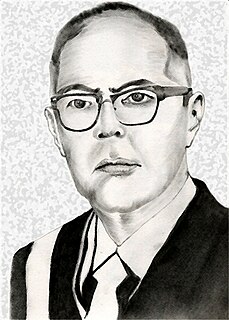A general election (Spanish : Elecciones generales de Honduras de 1928) was held in Honduras on 28 October 1928. Voters went to the polls to elect a new President of the Republic and a new Congress.

Spanish or Castilian is a Romance language that originated in the Castile region of Spain and today has hundreds of millions of native speakers in the Americas and Spain. It is a global language and the world's second-most spoken native language, after Mandarin Chinese.

Honduras, officially the Republic of Honduras, is a country in Central America. In the past, it was sometimes referred to as "Spanish Honduras" to differentiate it from British Honduras, which later became modern-day Belize. The republic of Honduras is bordered to the west by Guatemala, to the southwest by El Salvador, to the southeast by Nicaragua, to the south by the Pacific Ocean at the Gulf of Fonseca, and to the north by the Gulf of Honduras, a large inlet of the Caribbean Sea.
Contents
“The Liberal candidate, Dr Vicente Mejía Colindres, defeated Tiburcio Carías Andino in the 1928 presidential elections and became the first incumbent in Honduran history to win the presidency in peaceful elections against an official candidate”. [1]

The Liberal Party of Honduras is a centre-right liberal political party in Honduras that was founded in 1891. The party is a member of the Liberal International. The PLH is identified with the color red and white, as the flag Francisco Morazan used in most of his military campaigns during time of the Central American Federal Republic.

Vicente Mejía Colindres was President of Honduras between 16 September and 5 October 1919; and again between 1 February 1929 and 1 February 1933.

Tiburcio Carías Andino was a Honduran military man with a reputation as a strongman. He founded the National Party of Honduras in 1918, and was President of Honduras twice; briefly in 1924 and from 1933 to 1949.


